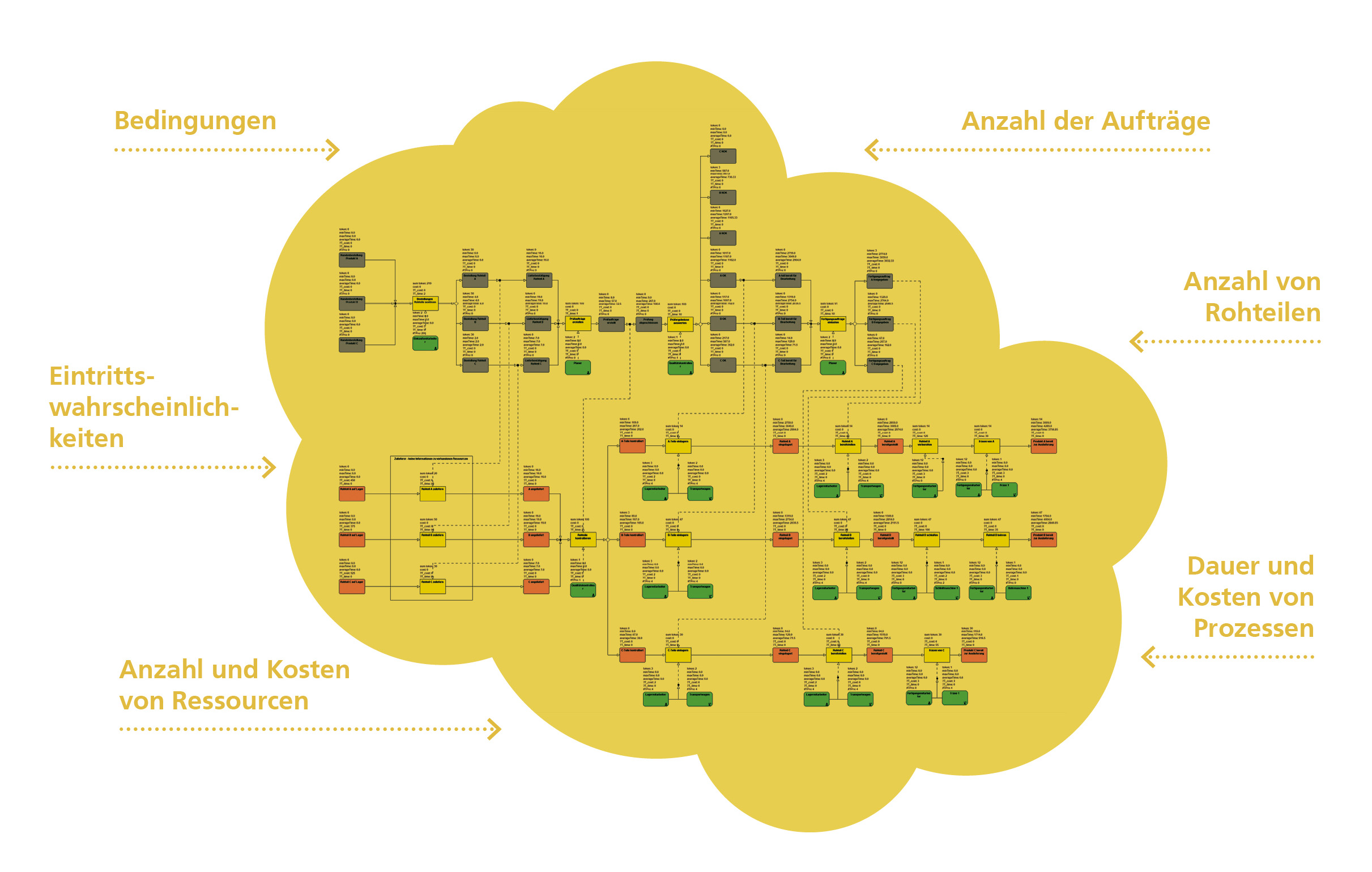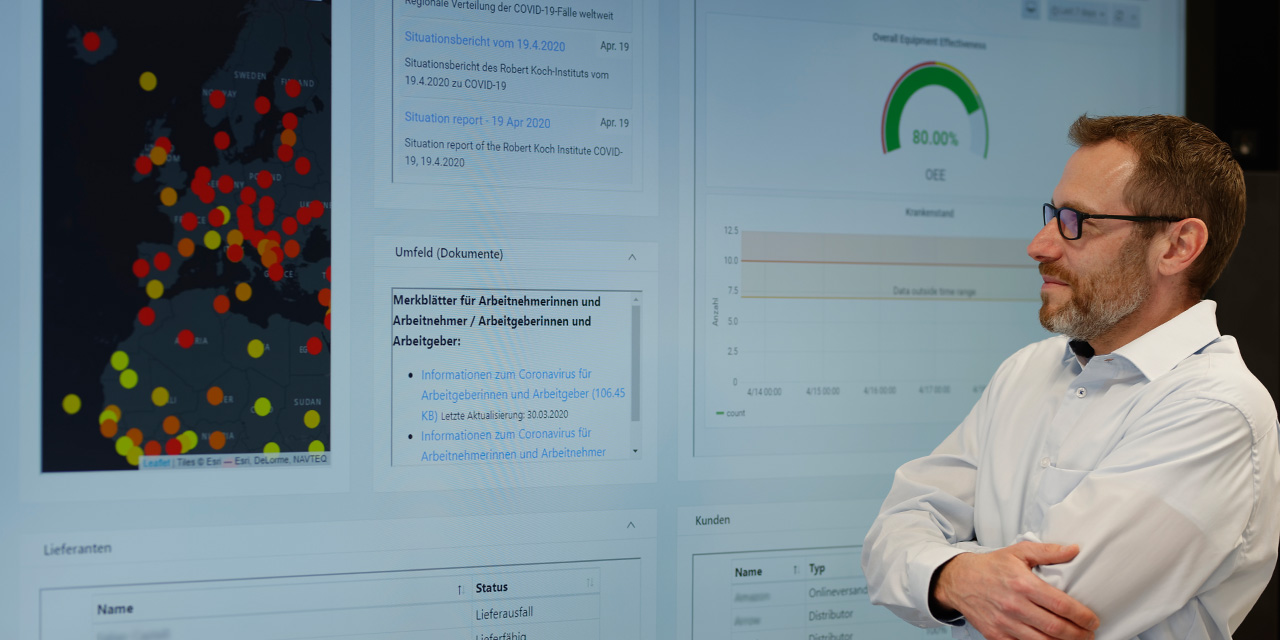Routine for the Crisis

March 2020: From one day to the next, everything has changed. Suddenly strict minimum distances between people apply, not only on the streets, but also in workshops, offices, and stores. A large proportion of retail and service businesses have to close, hygiene regulations for handicraft and manufacturing enterprises are radically rewritten within a very short time. Then national borders close, air traffic virtually comes to a standstill, international freight routes, conveyor belts of a global economic system, are held up. And as if all this were not enough, all recommendations, conditions and regulations change almost weekly.
The unprecedented exceptional situation into which the coronavirus SARS-CoV-2 has plunged the world at the beginning of the year has put even the most productive, best organized and profitable companies in trouble – at breathtaking speed. Often it was the question »What are we allowed to do now, and how?« that caused the business processes to lurch. Legal uncertainties met with disrupted supply chains, which made the just-in-sequence production applied by many businesses partially impossible.
In order to remain »master of the situation« under such exceptional circumstances, companies need structured and systematic strategies. In addition to crisis management concepts that can be planned and prepared, it is needs-based procurement and evaluation of relevant information that are core elements in coping with exceptional situations critical to the company. Because even the best preparation cannot foresee every possible critical situation. These can only be mastered by quickly understanding which factors have an impact on the company situation and how.
From daily business to crisis mode at the touch of a button
If you look at organizations that have to deal with exceptional situations on an almost daily basis – such as disaster control and security forces – it quickly becomes clear that companies can learn a lot from them. This is especially true when it comes to accessing and handling information. Such organizations have established methods for collecting all necessary information in the shortest possible time and interlinking it appropriately. They work with situational awareness concepts that bundle geo-referenced near-real-time data and information from various authorities, platforms, sensors and other sources and make them available to the respective crisis response team for decision support.
But how would such situational awareness concepts have to be adapted for the corporate context and how can the rapid creation of situation reports for companies be supported? First of all, it is every company’s interest to survive a crisis with minimal losses and to maintain its capability to do business during the course of the crisis. In turn, the capability to do business results from the feasibility of the company’s processes. In the event of a disruptive incident, it must therefore quickly become clear which business processes are subject to critical influences and how they are related to the delivery structure. Only then is the company able to set up and evaluate alternatives in order to derive targeted measures and monitor their implementation and effectiveness.

Situation awareness indicates the direction
Fraunhofer IPK’s interactive situational awareness cockpit makes such correlations visible. An important basis of the system is the process management suite, also developed at the institute. This is an established toolset for recording, modeling and clearly displaying business processes.
In the situational awareness cockpit, the process management suite is used to first create a model of the corporate structure. This model is linked to the operational systems available in the company, so that the required data can be combined on a case-by-case basis. The model should be composed as holistic as possible – in addition to critical internal process structures, it must also consider customers, suppliers, resources and products. This creates comprehensive transparency as to which of the company’s capabilities and processes are influenced by which external developments. The affected processes are then continuously monitored with regard to their status.
To protect processes in the further development of the crisis, it is essential to create transparency by means of »what-if« combinations and to assess the possible effects of alternative scenarios. Here, the interactive situational awareness cockpit offers model-based simulation tools that show the consequences of certain decisions or developments for business capability, such as liquidity. To mitigate these consequences, the critical process structure has to be subjected to measures whose implementation and effectiveness must also be continuously monitored.
With the help of the model-based approach, internal and external information can be quickly networked in a company-specific manner and iteratively refined and expanded as the crisis progresses. This makes it possible to establish a transparent control instrument for supporting the work of the crisis response team within a few days. It consistently links short-term goals, critical processes and resources, and possible developments with the management of measures and compiles them online for all members to access. And the system can do even more: It can act as a process assistant in the integrated management system of a company to temporarily adjust process definitions. This also supports the daily work of all employees. The system takes particular account of the process changes caused by the crisis and the required documents and responsibilities, even at short notice.
Survival thanks to constant ability to act
Fraunhofer IPK’s situational awareness cockpit provides an information technology center of company management in case of a crisis. Critical situations are quickly recognized and their effects analyzed. Even during first-time setup, the situational awareness cockpit can be made ready for action within three days in such a way that initial orientation and ability to act are ensured. Thus, the fragile balance between effort and benefit is maintained in exceptional circumstances – even in companies that have not worked with process support systems before.
 Fraunhofer Institute for Production Systems and Design Technology
Fraunhofer Institute for Production Systems and Design Technology
